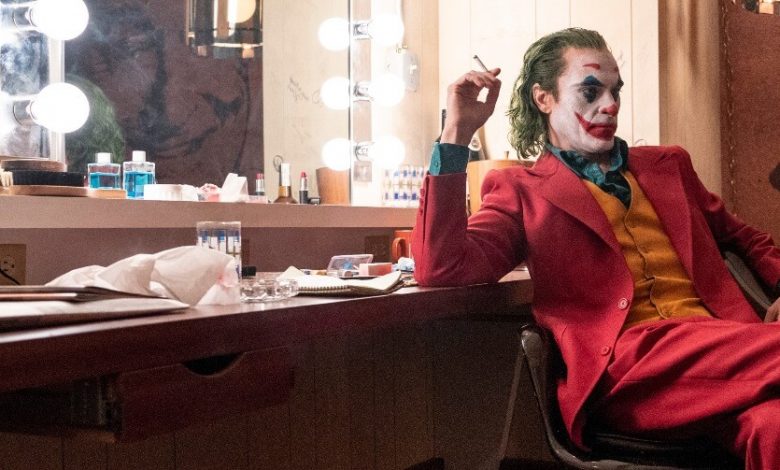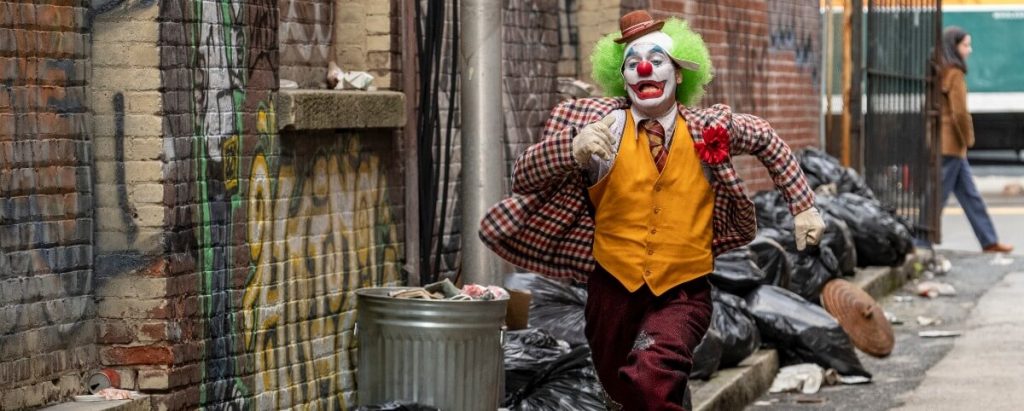The Media’s Newest Weapon Against ‘Joker?’ The Race Card

Media cycles come and go, and thank heavens for that.
Remember how reporters kept screaming about President Donald Trump putting kids in cages? Once enough conservative outlets showed his predecessor, President Barack Obama, did the same the narrative slowed to a crawl.
The same thing happened when reporters were certain former porn star Stormy Daniels would end the Trump era.
It didn’t, and reporters moved on.
The media isn’t ready to give up on its “Joker” fury yet, though. The actual movie, starring Joaqun Phoenix as the man who becomes Batman’s arch nemesis, continues to rake in the cash.
Meanwhile, reporters have had to move on from their narrative the movie would spark violence, an incel uprising, or both.
The facts on the ground just didn’t line up with that pre-packaged story. Although one movie goer apparently raised a ruckus in the theater while the movie played.
Now, reporters are turning the page and focusing on a specific part of “Joker’s” identity. His skin color, the tone beneath the greasepaint.
“The Real Threat of ‘Joker’ Is Hiding in Plain Sight,” declares The New York Times. The ensuing essay says the movie “accidentally” speaks to white privilege.
Really.
Still, what struck me most is that what the film wants to say — about mental illness or class divisions in American society — is not as interesting as what it accidentally says about whiteness. For it is essentially a depiction of what happens when white supremacy is left unchecked. It shows the delusions that many white men have about their place in society and the brutality that can result when that place is denied.
Arthur Fleck lives on the very lowest rung of society, for those keeping track at home. He just wants to keep a roof over his head and attempt a stand-up comedy career. Hardly the stuff of supremacy nightmares.

The article turns to out-and-out lies to buttress its arguments next.
He is frequently in conversation with people who occupy a lower rung in society than he does: a state-appointed therapist he sees early on; a protective mother who chastises him for playing peekaboo with her son on the bus; his possible love interest, a neighbor who lives in the same building; and the psychiatrist he sees in Arkham Asylum.
Fact check: The therapist has a steady, respectable job and likely lives in a nicer home than Arthur. We have no clue about the “protective mother’s” life, none. The neighbor appears kind, mentally sound and is a good parent, all three putting her well ahead of sad-sack Arthur. The Arkham psychiatrist … is a psychiatrist.
The argument here, we suppose, is that those characters are all black. So what? Here’s betting Arthur would love to switch places with any of them.
Finally, the author brings it home with a flourish.
Whiteness may not have been on the filmmakers’ minds when they made “Joker,” but it is the hidden accomplice that fosters the violence onscreen.
No, we’re pretty sure it’s the untreated mental illness and a growing list of cruel souls who literally beat him down that “fosters the violence.”
The reliably liberal Vulture brings up whiteness in its latest “Joker” treatise. The author compares a critical scene in the movie to the real-life case of subway vigilante Bernhard Goetz. The New Yorker shot four young men on a subway back in 1984 after they demanded he give them $5.
Those teens were black. The subway hoodlums shown in “Joker” are white. That frustrates the Vulture scribe.
Enough of the basic details of the historical incident remains to bring the 1984 incident to mind, but the movie dumps the context, opting for a reversal that renders the moment outrageously incoherent.
Translation: It doesn’t adhere to the worldview we wanted to see. And then there’s the “worry” that Phoenix’s Arthur Fleck doesn’t see color when it comes to people:
While the Goetz parallel teases that an explanation for its character’s action is white rage, the movie also takes great pains to depict Arthur as someone who, in only-in-a-movie fashion, just doesn’t seem to see color, remaining equal opportunity even in terms of whom he chooses to massacre.
Or, the filmmaker is trying to tell a story and isn’t putting every element through the woke ringer.
The New Yorker’s “Joker” review got ahead of the skin-color curve with its opening week review.
“Joker” is an intensely racialized movie, a drama awash in racial iconography that is so prevalent in the film, so provocative, and so unexamined as to be bewildering.
Will more “think pieces” play the greasepaint card on “Joker?” Or will reporters turn to yet another narrative to attack the fall’s biggest hit?
UPDATE: Minutes after this story went live Time Magazine Tweeted this story:
In Joker, Black Women Are Visible But They Are Not Seen
The film positions its black women characters in an oddly similar fashion, though it ends up doing them, and the movie, a great disservice in the process….
Joker undertakes a subtle but consistent mission to convince the audience that Fleck—a nihilistic mass-murderer—deserves understanding more than condemnation, and the black characters are on the front lines of that effort. Black characters, and especially black women, are relied upon to call out Fleck’s insanity, but their perspectives are repeatedly undermined.

